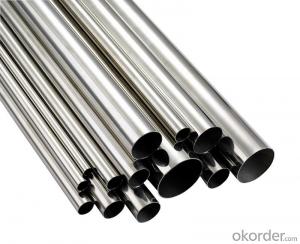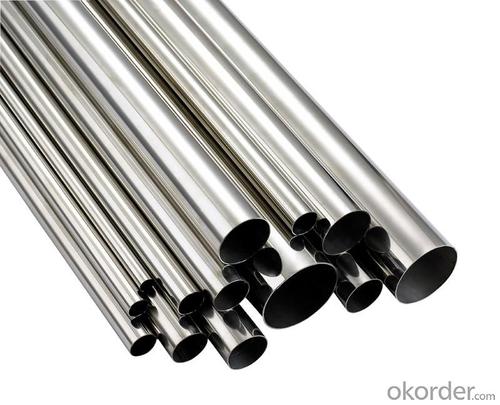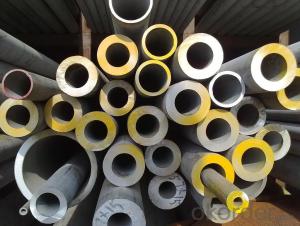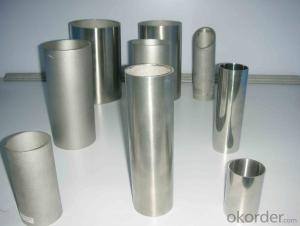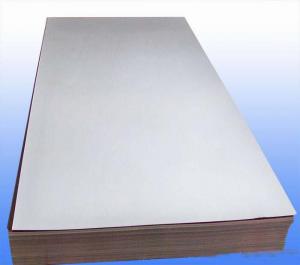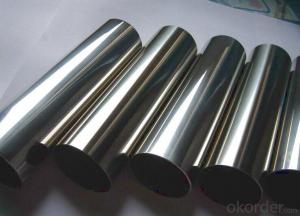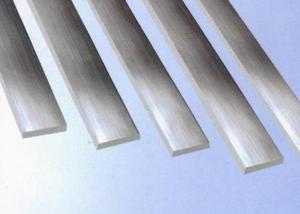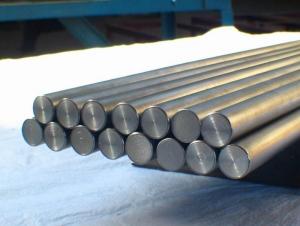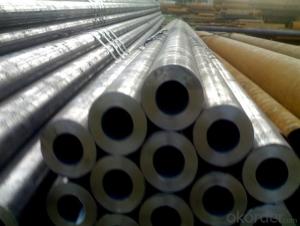Stainless steel pipes 316 pipe
- Loading Port:
- China Main Port
- Payment Terms:
- TT OR LC
- Min Order Qty:
- -
- Supply Capability:
- -
OKorder Service Pledge
OKorder Financial Service
You Might Also Like
In metallurgy, stainless steel, also known as inox steel or inox from French "inoxydable", is a steelalloy with a minimum of 10.5%[1]chromium content by mass.
Stainless steel does not readily corrode, rust or stain with water as ordinary steel does. However, it is not fully stain-proof in low-oxygen, high-salinity, or poor air-circulation environments.[2] There are different grades and surface finishes of stainless steel to suit the environment the alloy must endure. Stainless steel is used where both the properties of steel and corrosion resistance are required.
Stainless steel differs from carbon steel by the amount of chromium present. Unprotected carbon steel rusts readily when exposed to air and moisture. This iron oxide film (the rust) is active and accelerates corrosion by forming more iron oxide; and, because of the greater volume of the iron oxide, this tends to flake and fall away. Stainless steels contain sufficient chromium to form a passive film of chromium oxide, which prevents further surface corrosion by blocking oxygen diffusion to the steel surface and blocks corrosion from spreading into the metal's internal structure, and, due to the similar size of the steel and oxide ions, they bond very strongly and remain attached to the surface.[3]
Passivation occurs only if the proportion of chromium is high enough and oxygen is present.
Oxidation[edit]
High oxidation resistance in air at ambient temperature is normally achieved with additions of a minimum of 13% (by weight) chromium, and up to 26% is used for harsh environments.[14] The chromium forms a passivation layer of chromium(III) oxide (Cr2O3) when exposed to oxygen. The layer is too thin to be visible, and the metal remains lustrous and smooth. The layer is impervious to water and air, protecting the metal beneath, and this layer quickly reforms when the surface is scratched. This phenomenon is called passivation and is seen in other metals, such as aluminium and titanium. Corrosion resistance can be adversely affected if the component is used in a non-oxygenated environment, a typical example being underwater keel bolts buried in timber.
When stainless steel parts such as nuts and bolts are forced together, the oxide layer can be scraped off, allowing the parts to weld together. When forcibly disassembled, the welded material may be torn and pitted, an effect known as galling. This destructive galling can be avoided by the use of dissimilar materials for the parts forced together, for example bronze and stainless steel, or even different types of stainless steels (martensitic against austenitic). However, two different alloys electrically connected in a humid environment may act as Voltaic pile and corrode faster. Nitronic alloys made by selective alloying with manganese and nitrogen may have a reduced tendency to gall. Additionally, threaded joints may be lubricated to prevent galling.
Acids[edit]
Stainless steel is generally highly resistant to attack from acids, but this quality depends on the kind and concentration of the acid, the surrounding temperature, and the type of steel. Type 904 is resistant to sulfuric acid at room temperature, even in high concentrations, type 316 and 317 are resistant below 10% and 304 should not be used at any concentration. All types of stainless steel resist attack from phosphoric acid, 316 and 317 more so than 304; and Types 304L and 430 have been successfully used with nitric acid. Hydrochloric acid will damage any kind of stainless steel, and should be avoided.[15]
Bases[edit]
The 300 series of stainless steel grades is unaffected by any of the weak bases such as ammonium hydroxide, even in high concentrations and at high temperatures. The same grades of stainless exposed to stronger bases such as sodium hydroxide at high concentrations and high temperatures will likely experience some etching and cracking, especially with solutions containing chlorides.[15]
Organics[edit]
Types 316 and 317 are both useful for storing and handling acetic acid, especially in solutions where it is combined with formic acid and when aeration is not present (oxygen helps protect stainless steel under such conditions), though 317 provides the greatest level of resistance to corrosion. Type 304 is also commonly used with formic acid though it will tend to discolor the solution. All grades resist damage from aldehydes and amines, though in the latter case grade 316 is preferable to 304; cellulose acetate will damage 304 unless the temperature is kept low. Fats and fatty acids only affect grade 304 at temperatures above 150 °C (302 °F), and grade 316 above 260 °C (500 °F), while 317 is unaffected at all temperatures. Type 316L is required for processing of urea.[15]
Electricity and magnetism[edit]
Similarly to steel, stainless steel is a relatively poor conductor of electricity, with a lower electrical conductivity than that of copper.
Ferritic and martensitic stainless steels are magnetic. Austenitic stainless steels are non-magnetic.
- Q: How thick is the 3 stainless steel tube?
- 3 thicknesses representing 3 mm wall thickness
- Q: What's the difference between stainless steel 302 and 304?
- [difference] 302 stainless steel and 304 stainless steel 304 stainless steel is one of the most widely used kind of chromium - nickel stainless steel, as a widely used steel, corrosion resistance, good heat resistance, low temperature strength and mechanical properties; punching, bending and other thermal processing, non hardening heat treatment (using temperature -196 to 800 DEG C). 302 stainless steel the carbon is relatively high (302 C = 0.15%; 304 C is less than or equal to 0.08%) and better strength. The other indicators are basically the same as those of 304.
- Q: Can stainless steel pipes be used in the renewable energy industry?
- Yes, stainless steel pipes can definitely be used in the renewable energy industry. Stainless steel is a highly versatile and durable material that offers numerous advantages for various applications in renewable energy systems. One of the key benefits of stainless steel pipes is their exceptional corrosion resistance. This makes them ideal for use in environments where exposure to moisture, chemicals, and other corrosive elements is common, such as in solar power plants, geothermal energy systems, and offshore wind farms. Stainless steel pipes can withstand these harsh conditions and maintain their structural integrity over long periods, reducing the need for frequent repairs and replacements. Another advantage of stainless steel pipes is their high strength-to-weight ratio, which allows for the design of lightweight and efficient renewable energy structures. Stainless steel pipes can be used in the construction of support frames, structures, and pipelines for wind turbines, solar thermal collectors, and biomass power plants, among others. Their strength and durability contribute to the overall reliability and longevity of the renewable energy systems. Furthermore, stainless steel pipes are resistant to extreme temperatures, making them suitable for use in high-temperature applications like concentrated solar power systems. These pipes can handle the intense heat generated by solar receivers without undergoing deformation or degradation, ensuring the efficient transfer of heat in the system. In addition to their mechanical properties, stainless steel pipes are also hygienic and environmentally friendly. They are easy to clean and maintain, reducing the risk of contamination and ensuring the purity of fluids in renewable energy processes. Stainless steel is also a recyclable material, aligning with the sustainability principles of the renewable energy industry. Overall, stainless steel pipes offer a reliable, long-lasting, and cost-effective solution for various applications in the renewable energy industry. Their corrosion resistance, strength, temperature resistance, and environmental benefits make them an excellent choice for transporting fluids, supporting structures, and withstanding the demanding conditions of renewable energy systems.
- Q: Can stainless steel pipes be used for drinking water supply?
- Yes, stainless steel pipes can be used for drinking water supply. Stainless steel is a highly durable and corrosion-resistant material, making it a suitable choice for transporting drinking water safely and hygienically. Unlike other materials, stainless steel pipes do not leach harmful chemicals or contaminants into the water, maintaining its quality and purity. Additionally, stainless steel pipes are resistant to bacterial growth, which further ensures the safety of the drinking water.
- Q: Can stainless steel pipes be insulated with asbestos?
- No, stainless steel pipes should not be insulated with asbestos. Asbestos is a hazardous material that has been linked to serious health risks, including lung cancer and mesothelioma. It is widely recognized that exposure to asbestos fibers can be extremely dangerous, and its use has been banned in many countries. There are several alternative insulation materials available that are safer and more effective than asbestos. These include fiberglass, mineral wool, and foam insulation. These materials provide excellent thermal insulation properties without posing the same health risks as asbestos. When insulating stainless steel pipes, it is important to consider the specific requirements of the application and choose an appropriate insulation material that meets the necessary safety standards. It is always advisable to consult with a professional insulation contractor or engineer to ensure the correct insulation material is selected.
- Q: What is the difference between 904L and 316L stainless steel pipes?
- The main difference between 904L and 316L stainless steel pipes lies in their composition and properties. 904L stainless steel is a high alloy austenitic stainless steel with higher levels of chromium, nickel, and molybdenum, making it highly resistant to corrosion in various environments, including harsh industrial and marine conditions. On the other hand, 316L stainless steel is a lower alloy austenitic stainless steel that contains less chromium, nickel, and molybdenum, making it less resistant to corrosion compared to 904L. Therefore, 904L stainless steel pipes are typically preferred in applications that require exceptional corrosion resistance, while 316L stainless steel pipes are suitable for general-purpose applications.
- Q: Can stainless steel pipes be used for chemical processing?
- Yes, stainless steel pipes can be used for chemical processing. Stainless steel is known for its excellent corrosion resistance, making it a suitable material for handling various chemicals. It is resistant to both organic and inorganic chemicals, including acids, bases, and salts. Additionally, stainless steel pipes have high strength, durability, and temperature resistance, allowing them to withstand the harsh conditions often encountered in chemical processing. They are also easy to clean and maintain, making them a preferred choice in the industry. However, it is important to consider the specific requirements of the chemicals being processed and consult with experts to select the appropriate grade of stainless steel to ensure optimal performance and safety.
- Q: Are stainless steel pipes suitable for hot water applications?
- Indeed, stainless steel pipes are well-suited for the purpose of hot water applications. Renowned for its remarkable resistance to corrosion, stainless steel proves to be the perfect candidate for incorporation in plumbing systems that involve the use of hot water. The ability of stainless steel to withstand high temperatures guarantees that it can endure the heat generated by hot water without suffering any deterioration or harm. Furthermore, the internal surface of stainless steel pipes possesses a sleek texture, thereby aiding in the preservation of the integrity and purity of the hot water during transportation. Ultimately, stainless steel pipes emerge as a dependable and long-lasting option for utilization in hot water applications.
- Q: How do stainless steel pipes compare to PVC-U pipes?
- Various piping applications commonly utilize stainless steel pipes and PVC-U pipes, each possessing distinct characteristics and advantages. Primarily, stainless steel pipes are renowned for their remarkable strength and durability. With high resistance to corrosion, rust, and chemical reactions, they excel in applications where contact with aggressive substances or exposure to harsh environments is prevalent. Additionally, they can endure elevated temperatures and pressures, making them well-suited for demanding industrial uses. Conversely, PVC-U pipes, also known as polyvinyl chloride unplasticized pipes, offer lightweight properties and effortless installation. They provide cost-effective solutions and exhibit commendable chemical resistance, particularly against acids, alkalis, and salts. Plumbing, irrigation, and drainage systems commonly employ PVC-U pipes due to their superior flow characteristics and minimal maintenance requirements. Regarding versatility, stainless steel pipes cater to a broad spectrum of applications, including water supply, gas distribution, oil and gas pipelines, and sewage systems. They are frequently favored in industrial environments where reliability and longevity are paramount. Alternatively, PVC-U pipes find more widespread use in residential and commercial settings, prioritizing cost-efficiency and ease of installation. Notably, stainless steel pipes typically entail greater expense than PVC-U pipes, encompassing material costs and installation fees. Nonetheless, their extended lifespan and enhanced resistance to corrosion and chemical reactions often render them a more cost-effective option in the long term. Ultimately, the selection between stainless steel pipes and PVC-U pipes hinges on the specific requirements of the given application. Factors such as cost, durability, corrosion resistance, installation ease, and maintenance should all be contemplated when comparing these materials for a particular piping project.
- Q: Can stainless steel pipes be used for gas distribution?
- Yes, stainless steel pipes can be used for gas distribution. Stainless steel is a highly durable and corrosion-resistant material, making it suitable for transporting gas safely and efficiently.
Send your message to us
Stainless steel pipes 316 pipe
- Loading Port:
- China Main Port
- Payment Terms:
- TT OR LC
- Min Order Qty:
- -
- Supply Capability:
- -
OKorder Service Pledge
OKorder Financial Service
Similar products
Hot products
Hot Searches
Related keywords
